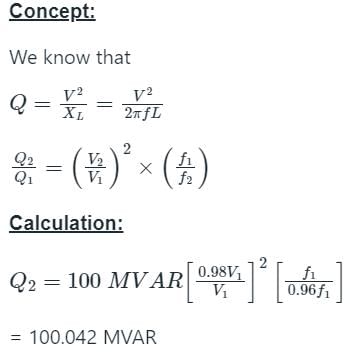Test: Power Factor Correction - Electrical Engineering (EE) MCQ
10 Questions MCQ Test - Test: Power Factor Correction
Which of the following methods is NOT used in the improvement of the power factor of a network?
Which device is employed to reduce the power factor in the case of the leading power factor in the transmission line?
1. Synchronous condenser
2. SVC
3. Reactor
Power factor can be improved by installing a device in parallel with load which has _______.
Which of the following leads to a low voltage and a low power factor?
How does the synchronous condenser work under light loads?
An alternator is supplying a load of 300 kW at 0.6 p.f. lagging. If the power factor is raised to unity, how many more kilowatts can alternator supply for the same kVA loading?
Which one of the following statements is incorrect about shunt capacitors?
A shunt reactor of 100 MVAR is operated at 98% of its rated voltage and at 96% of its rated frequency. The reactive power absorbed by the reactor is
A single-phase motor takes 50 A at a power factor angle of 30° lagging from a 250-V, 50-Hz AC supply. What value of capacitance must a shunting capacitor have to raise the power factor to unity?
Capacitors with automatic power factor controller, when installed in a plant:
















